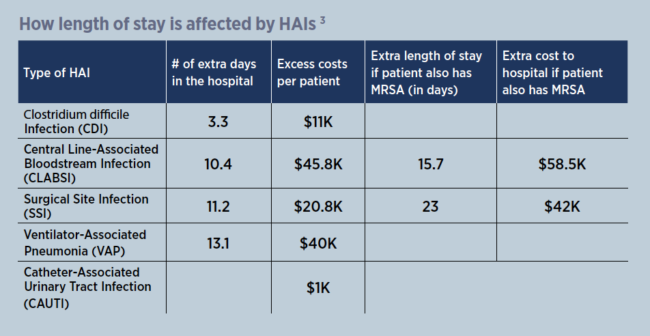Prevention & control of healthcare-associated infections
Healthcare-associated infections (HAIs) are one of the most common adverse events in care delivery and a major public health problem with an impact on morbidity, mortality and quality of life. These infections also present a significant economic burden at the societal level. However, a large percentage of HAIs are preventable through effective infection prevention and control (IPC) measures.¹
10% of patients get an infection while receiving care.²
$35 to $45 billion
Annual overall direct cost of HAIs to U.S. hospitals²
1 in 31 hospital patients has at least 1 HAI on any given day.³5x-10x Likelihood of ICU vs. non-ICU patients acquiring an HAI³
Impact of IPC programs
Effective IPC programs show a 30% reduction in HAIs. Many infection prevention and control measures, including hand hygiene, are simple, low-cost and effective; however, they require staff accountability and behavioral change.4
1 Source: World Health Organization’s “Guidelines on Core Components of Infection Prevention and Control Programmes at the National and Acute Health Care Facility Level,” ©2016
2 Source: Centers for Disease Control and Prevention (CDC)
3 Source: 2015 Webinar: The True Cost of HAIs: Reduce Cross Contamination & HAIs. Lynn White, M.D., Staff Anesthesiologist, Partner, Physician Anesthesia Services, PC & Chief Medical Officer with Patient Shield Concepts, LLC.
4 Source: World Health Organization
Share Email Infection Prevention, Q1 2020






